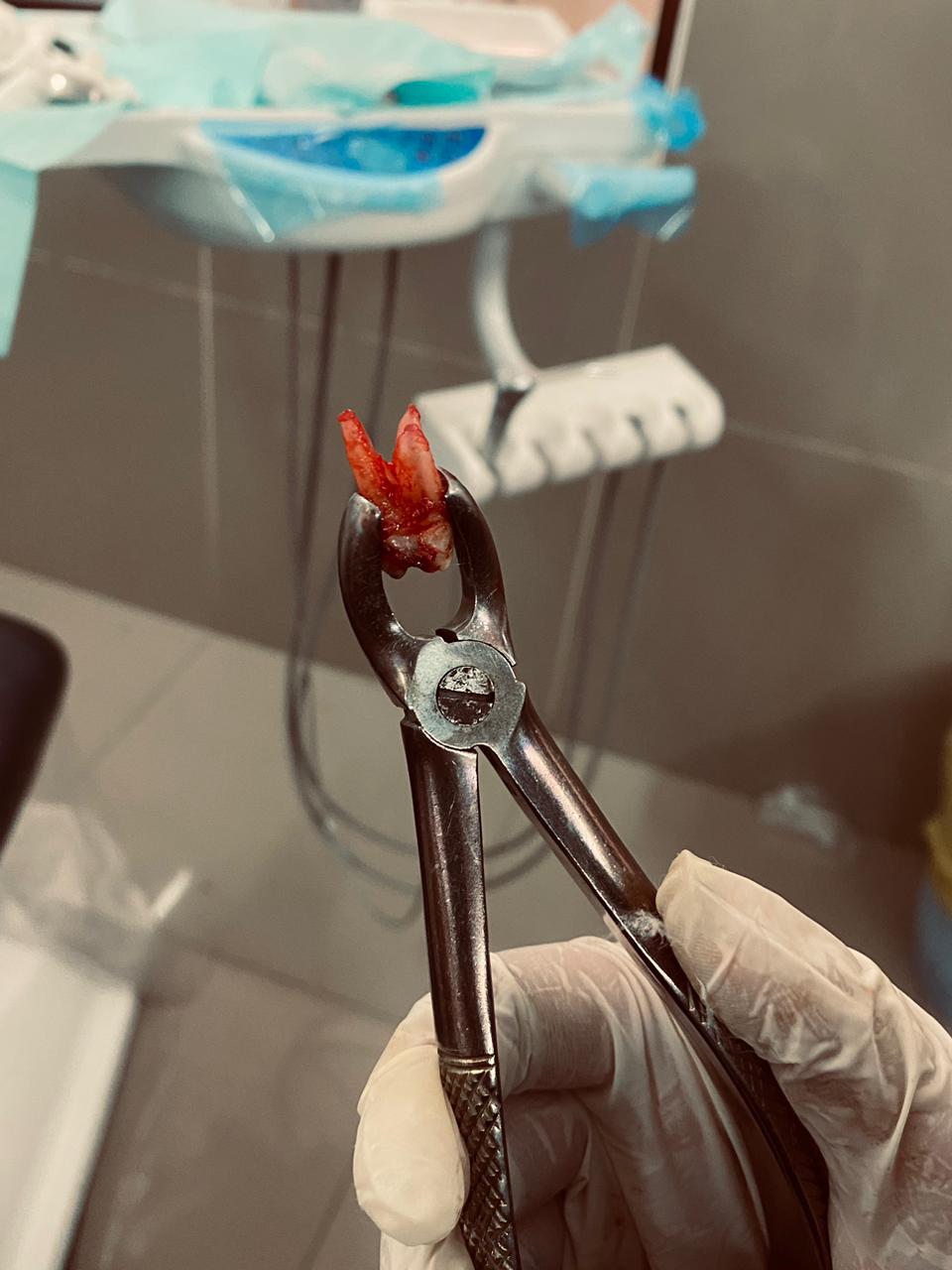Table of Contents
What is a broken tooth?
A normal tooth has a sound tooth structure with all of its walls and the central occlusal table. All of this sound tooth structure makes it very esthetic and this normal architecture is essential for the normal functioning of the tooth.
A tooth is considered a broken one if any one of the following situations occur:
- It has become so grossly carious that it feels “hollow” from the centre.
- 2-3 of walls are lost in such a way that is not restorable anymore.
- The whole tooth (the visible portion in the mouth) has been lost, and only the root remains inside.
Causes of a broken tooth
A broken tooth may be present in your mouth and it might be possible that you are not aware of it.
There can be many reasons why a sound tooth becomes a broken one, a few of them are listed below:
- Caries: The most common cause of a broken tooth is tooth decay or caries. It gradually eats up your tooth as a result of which you are left only with the root.
- Road accident: Very commonly encountered in dental hospitals are cases of road traffic accident with a broken tooth. The tooth is either completely lost, or some parts of it are lost. Whatever form is presented after an accident, mostly the tooth is considered to be a broken one.
- Trauma: This is most common in children as they fall several times while playing. As a result, they sometimes lose a part of their front teeth.
- Poor oral hygiene: When someone shows neglect towards their oral hygiene, it leads to bacteria build up on teeth. This bacteria causes caries to start developing, ultimately leading to tooth decay and tooth loss.
Treatment of broken tooth
The treatment of a broken tooth depends entirely on the condition of the tooth that it is presented in.
If only some part of tooth is lost and the dentist feels that it can be restored to its previous form and function, then the treatment plan is to restore it by doing composite or amalgam filling.
If a large part of tooth is lost, including 2 walls, then the treatment plan will be to restore it by using an artificial crown.
Mostly, “broken tooth” is referred to one that has been lost completely and now only the root remains inside the gums. The treatment plan of this type of broken tooth is extraction.
Extraction procedure
The extraction procedure of a broken tooth is a bit complex as compared to a sound tooth. This is because there is no sound body of tooth which will be used as a support to bring out the embedded root. This is why many people get anxious whenever they are going for a broken tooth extraction procedure. But for an experienced dentist, this is a piece of cake!
The procedure consists of some steps, which are crucial for the dentist to follow. If you or any of your loved one is gonna go for a broken tooth extraction, make sure to read this article till the end so that you can know if your dentists is missing any step.
Numbing the area
This first step comprises of two parts:
In the first part, the dentist applies a topical anesthesia which is in the form of a gel. This gel is applied at the area of injection.
This is done so that you don’t feel the pain of needle insertion during injection application.
The second part is where most people get scared. This is the time the dentist completely numbs the area by injecting anesthetic solution inside your gingiva, or gums. But because a topical anesthesia has already been applied, so you won’t feel the pain of this step.
Elevating flap
This might sound technical to you if you haven’t got any extraction experience before.
In this step, the dentist uses some instruments to de attach the gingiva that is enclosing the root of your tooth. This is done so that they can have better access to the root of your tooth.
But you don’t have to worry about this step or any step that follows this step, as your mouth is already numb due to the application of anesthesia.
Luxation
The root of your tooth is embedded deeply in your gums, and it is connected to the bone, because of which it is very firm.
The term “luxation” means to make the root move a bit freely between the bone that is holding it.
Pulling out the tooth
If luxation is done properly, it means that more than half of the work has been done. The only thing that is left after this is to pull out the loose tooth or root outside. This is done again with the help of a dental instrument, known as forceps. The beaks of forceps grabs the root, and the dentist then easily pulls out the tooth.
Wound closure
Where there used to be roots of a sound tooth before, there is only a hollow wound now. This wound must be closed in order to prevent any infections in the future and also to prevent food to accumulate there.
The wound is closed simply by pressing the empty tooth socket between thumb and index finger. The dentist then places a cotton roll at the site of your extraction and asks you to bite very tightly on this cotton toll. This applies pressure on the wound and ultimately leads to blood clot formation, and continuation of the cycle of wound healing.




